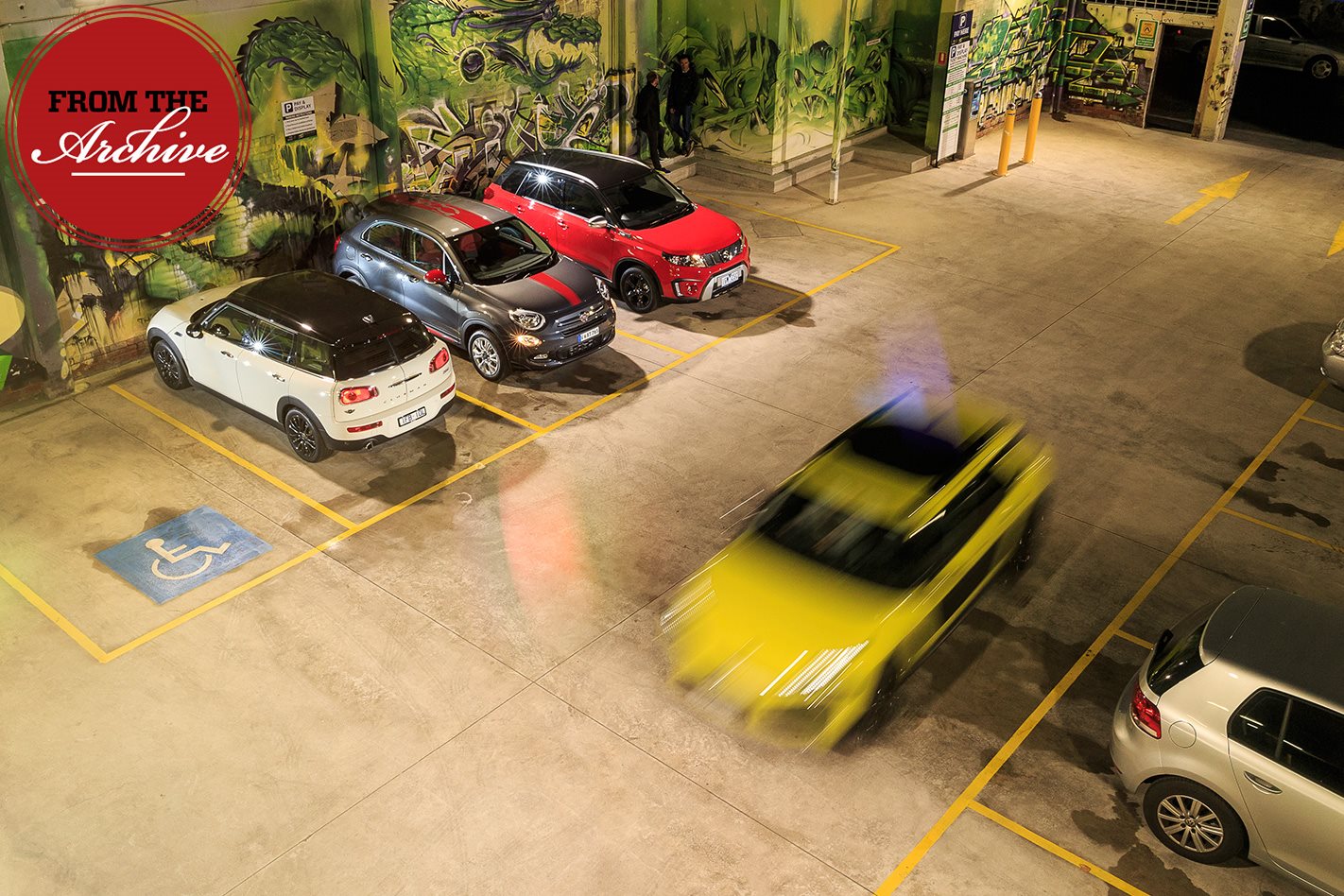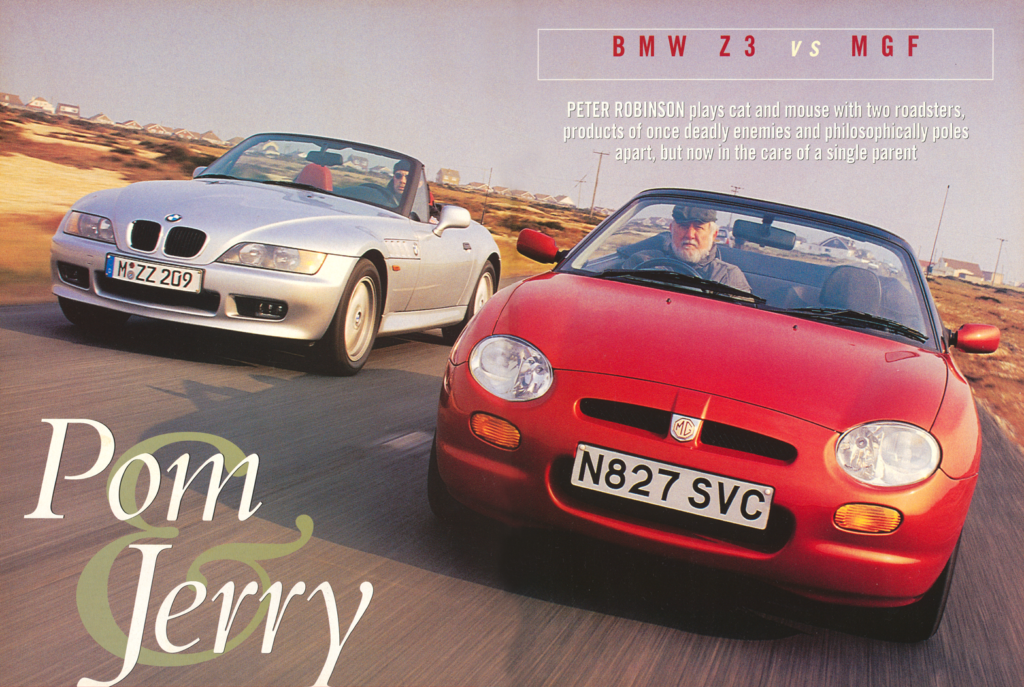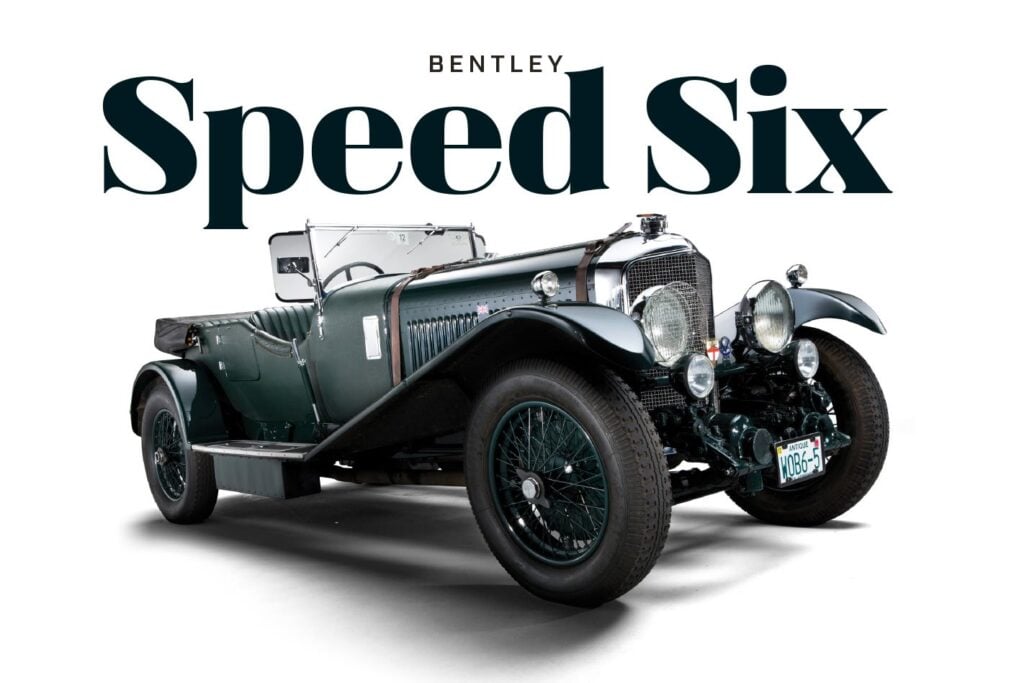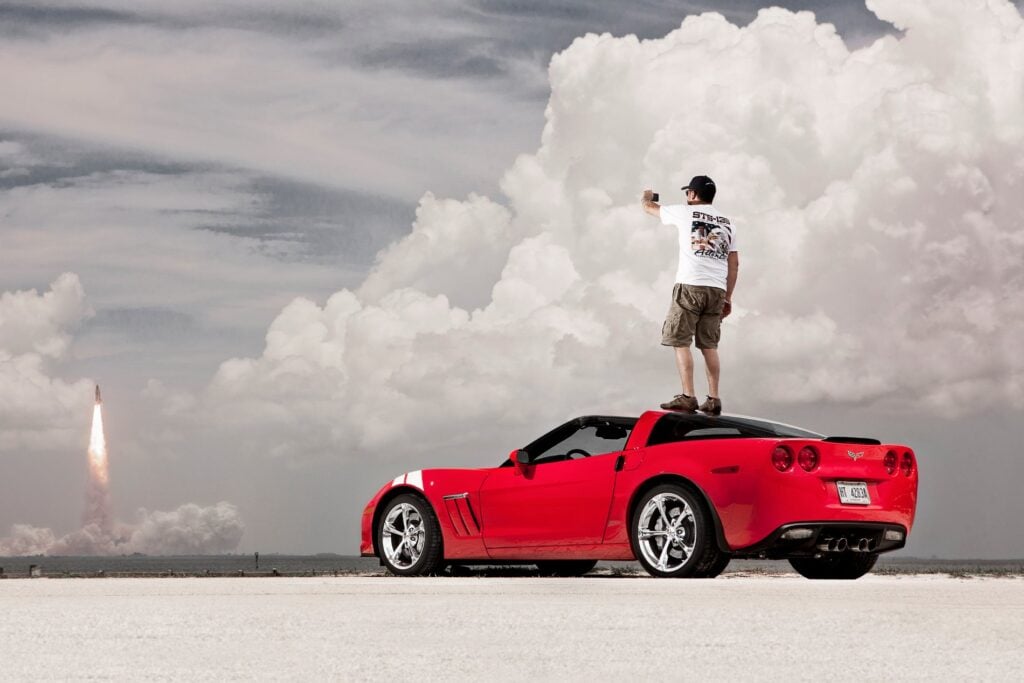First published in the August 2016 issue of Wheels magazine, Australia’s best car mag since 1953.
These four affordable and crazy little critters certainly push the design envelope, but which weirdo is most wonderful?
BACK when people’s houses were a Kenwood mix-master of patterns, just like their clothing, and Aussies bought cars painted in every colour of the rainbow, the small-car category was a hot-bed of weird, wacky, and wonderful. And the beige homogeneity of the future was just an Orwellian fantasy.
From in-line, flat and vee engines to gearboxes mounted inside the sump, ‘hammock’ seats, flip-up windows and even a single front-facing door, the creative freedom in designing a small car meant that car manufacturers could genuinely push the envelope. But then the world stopped taking risks and the small-car category became depressingly conformist, with the odd exception like Renault’s first-generation Twingo and Ford’s original Ka.
Citroen, Fiat, Mini and Suzuki have all made sizeable impressions on the weird and wacky aspects of our psyche. Think France’s ‘Tin Snail’, the 2CV; Italy’s rear-engined lineage of 500, 600 and 850 (and variations like the original Multipla); England’s game-changing, transverse-engined, front-drive Mini of ’59; and Japan’s trailblazing two-stroke, four-wheel-drive Suzuki LJ. And judging by this quartet of quirk, each brand has rediscovered how to make the slightly oddball saleable.
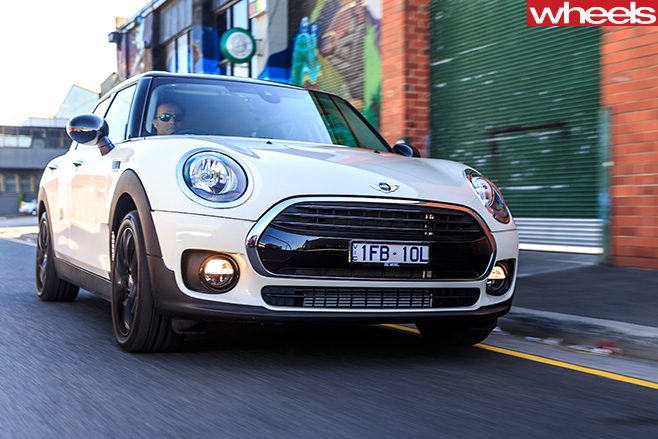
Chasing a similar market with a similar emphasis on design, Fiat’s ‘SUV when you aren’t having an SUV’, the Fiat 500X, also stands out from the crowd. Literally. Melding the design cues of Fiat’s hugely successful, decade-old Nuova Cinquecento into a five-door expanded hatchback, the 500X measures a statuesque 1600mm tall. And that’s the front-driver. The range-topping AWD Cross Plus hikes that 20mm further, making it 10mm taller than Suzuki’s more traditionally proportioned Vitara ‘All Grip’.
No matter which wheels are doing the driving, Suzuki’s reborn Vitara is like a room with a view. Front passengers feel almost like they’re sitting on a throne as they peer over its retro, clamshell-style bonnet, inspired by the original 1988 Vitara. But it’s underneath where the latter-day Vitara both conforms to and confounds Suzuki tradition.

If there’s one thing the Mini Clubman has in spades, it’s history, however spurious. While today’s design-intense BMW-developed generation owes absolutely nothing to its once-radical forebears in anything but name, the new-millennium Mini has had a massive influence on a global scale. Not only is it the first genuine retro smash hit, it’s also the master of customisation, be it colour, trim, engine, transmission, bodystyle, you name it. From a base 3dr Mini One manual to a fully loaded, heavily turbocharged 5dr, Clubman or Convertible range-topper, there’s a Mini out there to suit almost everyone.
On the surface, we’ve chosen potentially the wackiest Mini there is – the wagon-esque Clubman in three-pot turbo guise. With its barn-type rear doors opening outwards in sequence, and an even longer wheelbase than the (older-generation) Countryman that sits above it, the lengthy Clubman looks a little bit like a sausage dog. Which is kinda weird for a car.
The Citroen C4 Cactus inherits its underpinnings and part of its name from Citroen’s snoozy current-generation C4 hatch, much like the jacked-up coupe/hatch DS 4, though it has been allowed to develop very much of its own accord, rather than inheriting C4 cast-offs like the dreary dashboard donated to the DS 4. And it’s this simpler, weight-conscious approach that underpins the essence of this unusual vehicle.
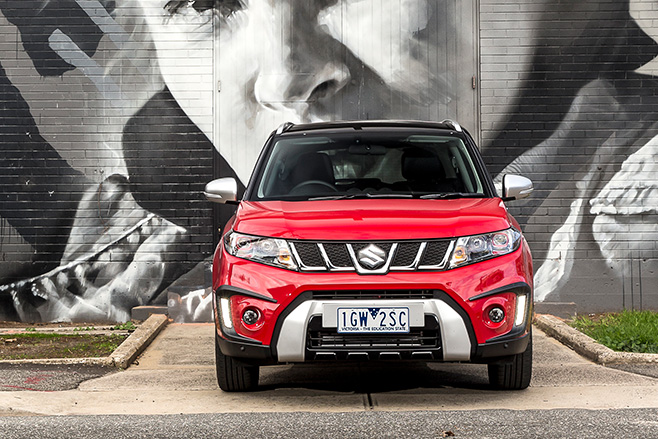
The front passenger doesn’t get an outer air vent, but the centre one is twice as big as the driver’s to compensate, and the Cactus is one of the few cars on sale today without a tacho. Instead, a simple gearshift indicator appears in its digital instrument strip when it believes you should be considering another ratio. And even if you think that’s poppycock, remember that PSA’s brilliant turbo-triple is so goddamn tractable and torquey, it operates much like an air-cooled Volkswagen. You simply drive it by feel.
In order to rip 200kg from the C4 hatch’s bland body, however, some ‘weight saving’ is a step too far. Like the Cactus’s tilt-only steering column, its lack of one-touch power windows (you have to hold the button for all of them), no grab-handles in our panoramic roof-equipped test car, and a flimsy boot-floor cover that leaves painted metal exposed to scuffing. But then that also allows some funky body colour to creep inside, like a car from decades ago, and the Citroen’s deep 358-litre compartment is a great size, underpinned by a space-saver spare and a split-fold rear backrest that turns this Airbumped little charmer into something of a Tardis.
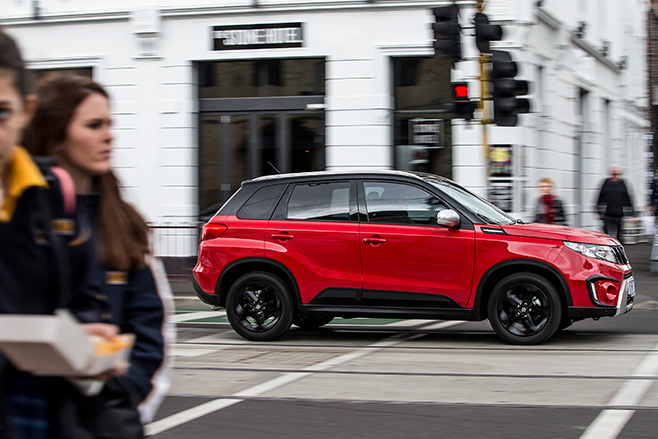
Same goes for the surprisingly large 500X. This Fiat-500-in-name-only ranks equal first with the longest, widest, tallest and heaviest of its fashionista competitor set, which is both a good and a bad thing. While the Clubman adds 25kg to the 500X’s weighbridge ticket, the Fiat is nearly 160mm taller than the Mini, handing it a top-heavy disadvantage matched only by the similarly configured, though 60kg-lighter AWD Suzuki.
And that’s how they play out on the road. With its low centre of gravity making up for any weight-related issues, it doesn’t take long behind the Clubman’s chunky steering wheel to discover its UKL platform was clearly intended to underpin a Mini first, not a front-drive BMW SUV/MPV. In fact, we’d go so far as to say that – ballistic Mini GP variants aside – the latest F54 Clubman is the most dynamically cohesive Mini variant since the brand’s relaunch 15 years ago.
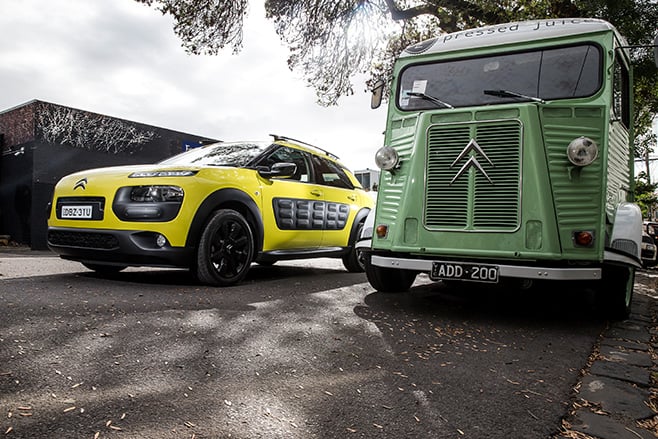
Enhancing the Clubman’s sporting dynamic polish is its driving position, strengthened by tightly bolstered (optional) sports seats in our test car to provide an excellent base to work from. And while the Cooper-spec Clubman’s terrific steering wheel lacks shift paddles, its transmission gate is configured so that you nudge the lever forward for a downshift, in our (and BMW’s) preferred fashion.
About the only real downside is the 1.5-litre 100kW three-cylinder turbo’s ultimate lack of herbs. While it thrums smoothly and feels impressively elastic, endowing it with deceptive pace in much the same way as the three-pot turbo Citroen, there’s no escaping the Mini’s solid 1320kg kerb weight, which impacts on its real-world fuel consumption (11.4L/100km on test). A bit more boost and a touch more induction and exhaust rasp is what the Cooper Clubman needs to adequately support its addictive handling.
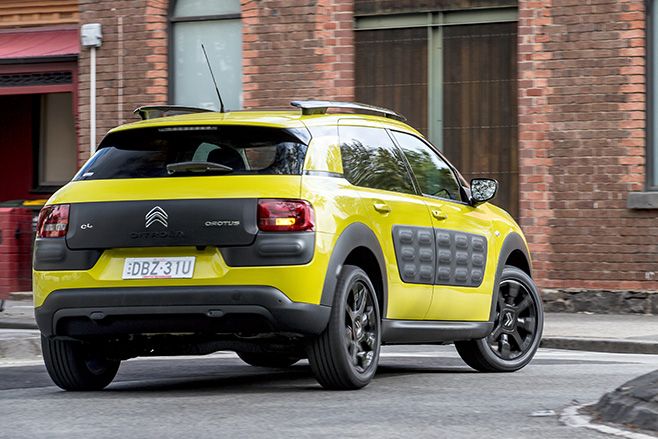
The only downside to the Citroen’s outstanding efficiency is that it’s available as a manual or nothing, which is fine by us but not when 80 percent of buyers are choosing the inferior turbo-diesel because it doesn’t have a clutch.
Another Cactus negative relates to its lack of steering reach adjustment. Getting its quirkily styled leather-clad wheel in the right place to attack corners creates a tightly bunched environment for your legs, especially if you’re lanky. Things can get busy down at footwell level and the only way to adequately heel-and-toe for downshifts is by rolling your right foot onto the throttle, much like you do in an old VW Beetle.

Jumping straight from the relatively low-slung Cactus into the 500X, the first thing you notice is the massive increase in driving-position height, which some buyers will love. The Fiat’s chunky three-spoke wheel implies sportiness, despite a rim that is arguably too thick, and so do its shift paddles and multiple drive modes (Auto, Sport and Traction Plus) activated by a dial on the centre console. But the reality is a mixed bag of okay, underwhelming and irritating.
Chief dynamic spoiler is the 500X’s electric steering, which feels gooey in Sport mode, and slightly crisper in Auto, though it’s always about degrees of viscosity. And the fat wheel rim only exacerbates the impression.
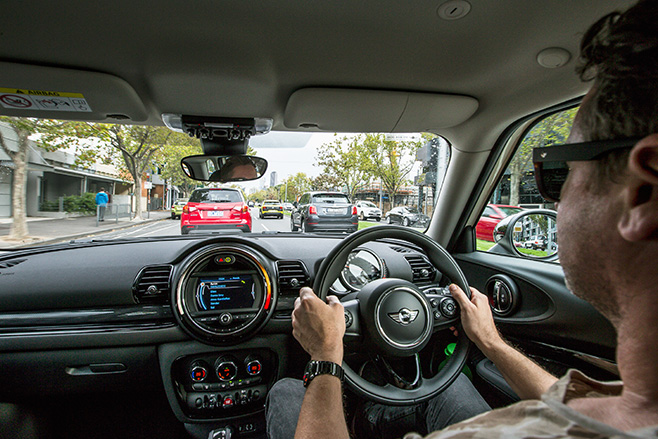
The driver reward it does offer stems from its keen and subtly raspy engine, but even then Fiat’s 1.4 turbo can only just keep the Citroen honest in 80-120km/h rolling acceleration, despite using every gear available (as opposed to being held manually in third).
If it’s proper grunt you’re after, only one of these curios truly delivers – the Vitara S Turbo. Suzuki’s all-new 1.4-litre turbo-petrol four is a sweet little peach, proving smoothly responsive while smashing the others in standing-start acceleration, even though it won’t rev beyond 6000rpm. A manual transmission would be nice (and is a possibility if enough people show interest), though the Vitara’s six-speed auto does a good job of channelling the ‘Boosterjet’ four’s torque, making this tall-boy small SUV feel more like a warm hatch.
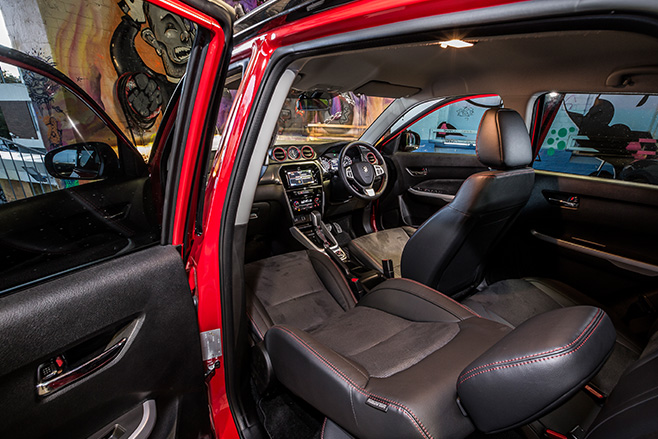
Despite a retune for all MY16 Vitaras that has removed the stickiness that blighted last year’s examples, the Suzuki’s steering is still too vacant at straight ahead and lacks cohesion with its chassis. That said, the more lock you apply on winding roads, the greater its poise, though more work is needed to tie it all together, including taming its overly sensitive braking response and susceptibility to crosswinds.
Same goes for Vitara’s ride. Shod with reasonably modest Continental Eco Contact 215/55R17s, it feels unsettled at all speeds, even carrying a full load of mates, though it sounds worse than it feels, with quite a bit of tyre roar and some suspension noise and float over big bumps. But it houses four adults with relative ease (or five at a pinch), with rear folk seated theatre-style on a nicely elevated cushion, undermined slightly by an excessively reclined backrest.
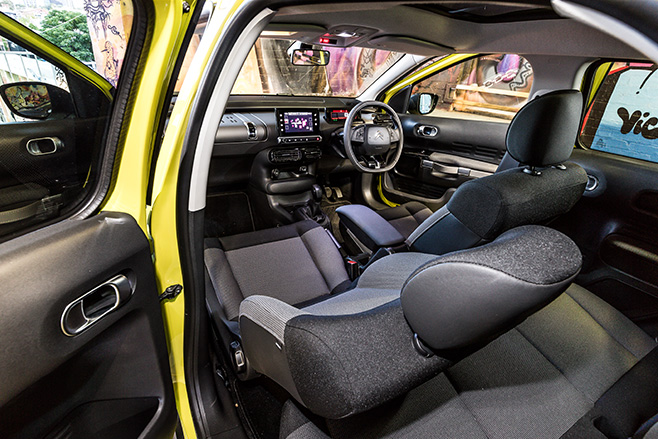
Unexpectedly, the Mini shines almost as brightly as the Cactus, and in some areas even more so. Its lengthy cabin offers the most rear-seat legroom, as well as an impressive theatre-style view and terrific all-round vision for a Mini. And the Mini Clubman sits a class above in its finish and features. Four auto-up/down power windows, dual front lumbar support adjustment, a removable/configurable boot floor, plus two elasticised boot straps and bins in the rear barn doors prove that you get what you pay for in a Mini Clubman.
It also – wait for it – rides well. Wearing 225/45R17 Bridgestone Turanzas, the Clubman is firm but all of a piece, with a comforting, rattle-free solidity. There’s some coarse-surface tyre noise but otherwise the Clubman sits right at the pointy end when it comes to accommodation.
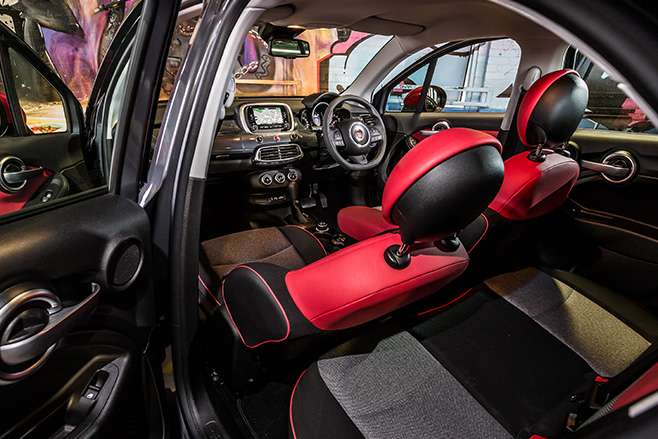
All of which ultimately spells ‘wooden spoon’ for the 500X. While far from being a total dunger, it looks and feels a bit like a Fiat designed for Americans, lacking the design subtlety to match its punchy, likeable drivetrain. The 500X is missing both the regular 500’s fun and the Citroen Cactus’s panache, though improved seating and a comprehensive dynamic rethink could turn things around. But as it stands we can understand why people might prefer a Jeep Renegade…
Unless you’re completely invested in the Fiat’s appearance, the more generic Vitara S Turbo is a much stronger proposition, blending gutsy performance with surprising efficiency and the obvious USP of all-wheel drive among this quirky quartet. It can be fun to drive, too, and offers an interesting mix of colours and trims to make up for its budget plastics and econocar basics. But it doesn’t feel special like the Cactus does.
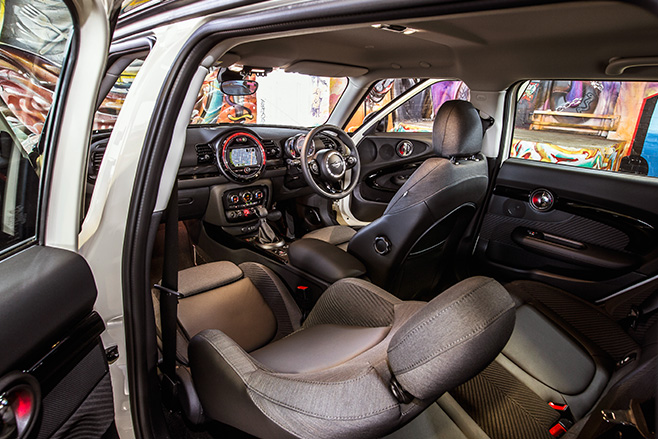
One thing that works to a surprising degree is Mini’s Clubman. While its biggest design feature – those barn rear doors – is ironically its biggest flaw in terms of practicality, there’s a cohesion to this car that few modern Minis have managed to achieve. In fact, slightly awkward styling aside, we reckon this is the best Mini since the brand’s 2001 relaunch. And, in fine Mini tradition, it continues to deliver something the others can’t – choice. Manual or automatic, petrol or diesel, slow or fast, subtle or sinister, there’s a quirky, unique Clubman out there for everyone.

